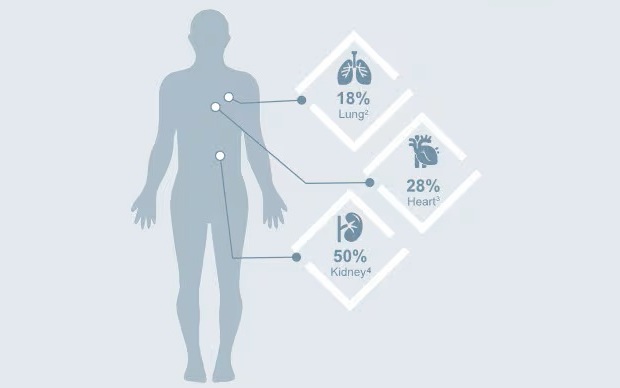Human Pegivirus Identified in Encephalitis Patients
By LabMedica International staff writers
Posted on 17 Oct 2018
Human pegivirus (HPgV), was previously called hepatitis G virus or GB virus C, and is a lymphotropic virus with undefined pathology and many viruses from the family Flaviviridae, to which HPgV belongs, are neurotropic.Posted on 17 Oct 2018
Infection with HPgV is common worldwide; about 5% of healthy blood donors in industrialized countries are viremic, whereas in some developing countries the prevalence of viremia among blood donors is approximately 20%. There is evidence that HPgV is transmitted parenterally, sexually, and also vertically from mother to child. However, the high proportion of HPgV infection in apparently healthy blood donors and the general population suggests existence of nonparenteral routes.

Image: The MiSeq Sequencing platform (Photo courtesy of Illumina).
Scientists from the Medical University of Warsaw (Warsaw, Poland) and their colleagues prospectively enrolled 96 patients with encephalitis at the Warsaw Hospital for Infectious Diseases (Warsaw, Poland) from June 2012 through July 2015. They collected cerebrospinal fluid (CSF) and serum samples from patients at admission (5 to 7 days after symptom onset).
They tested the samples from all 96 patients for the presence of 5′ untranslated region (UTR) HPgV RNA. The team performed real-time quantitative PCR (qPCR) or real-time quantitative reverse transcription PCR (qRT-PCR) to detect other viruses. They detected autoantibodies against neuronal surface antigens using the Autoimmune Encephalitis Mosaic 6 assay. They subjected the amplified PCR products to single-strand conformational polymorphism analysis. The reamplified RT-PCR products with primers specifically designed for the Illumina MiSeq platform.
The scientists found HPgV in serum and cerebrospinal fluid from three patients who had encephalitis of unclear origin; that is, all the markers that had been tested were negative. Single-strand confirmation polymorphism and next-generation sequencing analysis revealed differences between the serum and cerebrospinal fluid–derived viral sequences, which is compatible with the presence of a separate HPgV compartment in the central nervous system.
The authors concluded that they had detected HPgV sequences in the CSF of three patients with encephalitis of unclear origin, and these sequences from CSF differed from those circulating in serum. These findings are compatible with the presence of a separate viral compartment in the CNS. Determining if the pegivirus was responsible for encephalitis or if it was present along with another cause of encephalitis will require further studies including histopathological analysis. The study was published in the October 2018 issue of the journal Emerging Infectious Diseases.
Related Links:
Medical University of Warsaw
Warsaw Hospital for Infectious Diseases













